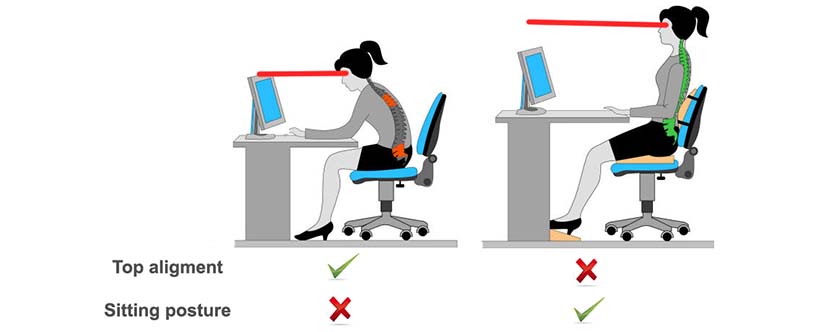Office ergonomics is very important to maintain a healthy lifestyle or if correctly put, a healthy spine. Ergonomics is
[the_ad id=”6147″]the science of designing the workstation to fit within the capabilities and limitations of the worker for maximum productivity and efficiency. An ergonomically correct office work station helps one avoid fatigue and discomfort.
Office ergonomics is important, because
- Less likely to have problems such as headache or eyestrain
- Reduce neck and back pain
- Prevent bursitis or tendon problems that are linked to doing the same task over and over again
Besides, ergonomics improves employee engagement and creates a better safety culture in office.
It is common for injury and illness to happen at work. Both can cost the employee and your employer time and money. They can also affect how well one is doing the job.
Most on-the-job injuries are caused by
- Falls
- Repetitive movements
- The way one sit or stand
- Bending over, lifting heavy objects, or using pressure or force
- Working with vibrating tools
Standing Posture: Maintaining the natural curve of the spine when standing promotes “good posture”.
Sitting Posture:
- The seat is not pressing against the back of the knees
- Back support – Keep the backbone straight, shoulders back, abdomen and Chair position – Adjust the height of the chair so that one’s feet rest comfortably on the floor, with your knees about level with your hips, making sure buttocks pulled in, and chin tucked. If your chair doesn’t allow this, try placing a cushion between the curve of your lower back and the back of the chair.
- Footrest – Rest the feet on a flat surface. If your chair is too high, consider using a footrest.
- Computer monitor – Position your monitor 18 to 30 inches from your eyes. The top of your screen should be at eye level or below so you look slightly down at your work. If glare is a problem, turn off some or all overhead lights and close blinds if possible.
- Key objects – Arrange frequently used objects – such as pens, phones and your coffee cup – within 10 inches of your body.
- Headsets – Use a headset if you frequently talk on the phone and type or write at the same time.
- Wrist rest – Keep your wrists in a straight, natural position when using your keyboard. Do not use your wrist rest while typing. Take occasional breaks from typing.
- Mouse – Place your mouse to the side of your keyboard so you don’t have to reach too far to use it.
Healthy Tip:
It is beneficial to take stretching breaks throughout the day. Sitting at a desk all day, even with the best posture and ergonomics, can still be stressful on your body. On average, our body can only tolerate one position for about 20 minutes before needing to be readjusted. Taking a one-minute break every 20 minutes is helpful.
Source:

